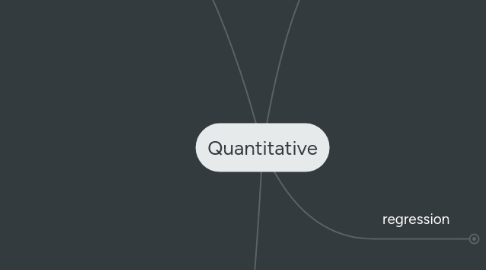
1. multi-linear regression
1.1. assumption
1.1.1. xi xj are independent
1.1.2. violation
1.1.2.1. heteroskdasticity
1.1.2.1.1. type
1.1.2.1.2. detect
1.1.2.1.3. correct
1.1.2.2. autocorrelation(serial)
1.1.2.2.1. type
1.1.2.2.2. Detect
1.1.2.2.3. correct
1.1.2.3. multicollinearity
1.1.2.3.1. Xi Xj correlation <>0
1.1.2.3.2. Detect
1.1.2.3.3. Correct
1.1.2.4. misspecification
1.1.2.4.1. wrong pooling data
1.2. ANOVA:same as simpel LR
1.2.1. Analysis
1.2.1.1. Analysis:SEE=sqrt(MSE)
1.2.1.2. R2 =RSS/TSS
1.2.1.3. adjust R2
1.3. Sig Test
1.3.1. Sig Test:every X is linear relation to Y?
1.3.1.1. 2 tailed
1.3.1.2. t-test
1.3.1.2.1. df=n-k-1
1.3.1.2.2. ti=bi/sbi
1.3.2. Sig Test: more than zero X is linear
1.3.2.1. 1 tailed
1.3.2.2. F-test
1.3.2.2.1. F=MSR/MSE
1.4. Special Example
1.4.1. Dummy variable(X)
1.4.1.1. Y:EPS,Xi:Qi
1.4.2. Dummy variable(Y)
1.4.2.1. Probit and Logit model
1.4.2.2. Discriminant model
2. Time serial
2.1. linear trend model
2.1.1. log linear trend model
2.1.1.1. autocorrelation
2.1.1.1.1. detect
2.2. Autoregressive AR(p)
2.2.1. autocorrelation
2.2.1.1. Detect
2.2.1.1.1. kth order
2.2.2. seasonality
2.2.3. mean reversion
2.2.3.1. AR(1)=b0/(1-b1)
2.2.4. Compare performance for forecast model
2.2.4.1. in sample
2.2.4.2. out of sample
2.2.4.3. RMSE smaller ,it better
2.2.4.4. disadvantage
2.2.4.4.1. dymatic
2.2.4.4.2. stable in short time
2.3. Random walk
2.3.1. type
2.3.1.1. with drift
2.3.1.2. simle
2.3.2. cov stationary
2.3.2.1. undefined mean reverting
2.3.2.2. correct
2.3.2.2.1. first differencing
2.3.2.3. detect
2.3.2.3.1. unit root test
2.3.3. heteroskedasticity
2.3.3.1. detect
2.3.3.1.1. e~N(0,a0+a1e2)
3. Correlation
3.1. Cov(无穷)
3.2. Correlation
3.2.1. 取值
3.2.2. linear correlation
3.2.3. limitation
3.2.3.1. outlier
3.2.3.2. no linear relation
3.2.4. Sig Test
3.2.4.1. 2 tailed
3.2.4.2. T-test
3.2.4.3. df=n-2
4. regression
4.1. simple linear regression
4.1.1. assumption
4.1.1.1. E(e)=0,Var(e)-C
4.1.1.2. Eeiej)=0
4.1.1.3. e is normal distribution
4.1.2. estimated coefficent
4.1.2.1. intercept
4.1.2.2. slope
4.1.2.2.1. Cov(x,y))/Var(x)
4.1.3. Sig Test
4.1.3.1. H0:b1=0
4.1.3.2. 2 tailed
4.1.3.3. T-test
4.1.3.3.1. t=b1/sb1
4.1.3.3.2. df=n-2
4.2. ANOVA table
4.2.1. Regression
4.2.1.1. df=k=1
4.2.1.2. RSS
4.2.1.3. MSR=RSS/k=RSS
4.2.2. error
4.2.2.1. df=n-2
4.2.2.2. SSE
4.2.2.3. MSE=SSE/(n-2)
4.2.3. Total
4.2.3.1. df=n-1
4.2.3.2. TSS=RSS+SSE
4.2.4. Analysis
4.2.4.1. Analysis:SEE=sqrt(MSE)
4.2.4.2. R2 =RSS/TSS
4.2.5. Limitation
4.2.5.1. assumption violated
4.2.5.2. change overtime
4.2.5.3. useless when others are aware

